All Bones of the Upper Limb:
Anatomy and Functions Explained
Introduction:
The upper limb consists of bones that provide structure, support, and mobility, facilitating a wide range of functions from gross motor activities to fine motor skills.

Total Bones in Upper Limb
There are 206 bones in an Adult human skeleton.
- Out of which 64 bones are present in upper limbs (Right+Left).
- Each upper limb has 32 bones.
Major Bones of the Upper Limb
The upper limb is divided into four main regions:
- the shoulder girdle
- arm
- forearm
- hand.
Each region contains specific bones that play distinct roles in movement and function.
1.Shoulder Girdle
It consists of Two Bones.
a)Clavicle
b)Scapula
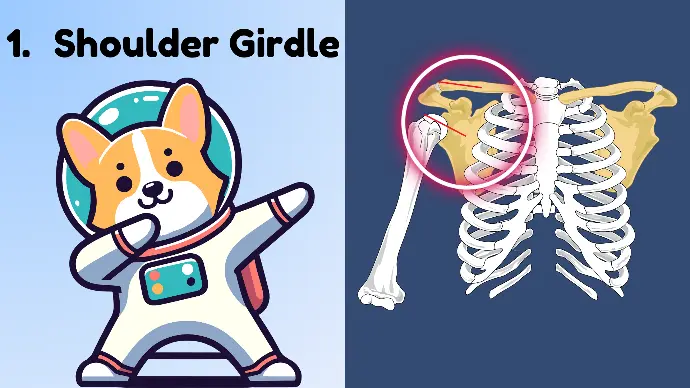
a) Clavicle:
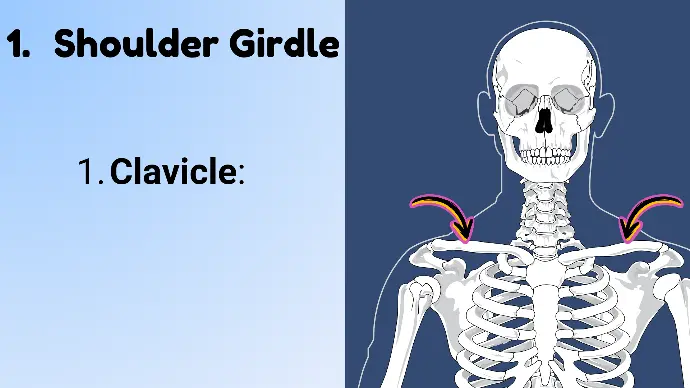
Also known as the collarbone, it is a long bone that connects the sternum to the scapula.
- Structure: S-shaped with a medial sternal end and a lateral acromial end.
- Function: Acts as a strut to keep the scapula in place, allowing the arm to move freely (away from the trunk).
b) Scapula:

Also known as the shoulder blade, it is a flat, triangular bone that lies on the posterolateral side of thoracic cage.
- Structure: Includes the spine, acromion, coracoid process, and glenoid cavity.
- Function: Provides attachment points for muscles and forms the socket of the shoulder joint.
2. Arm
Arm consists of One bone called, Humerus.
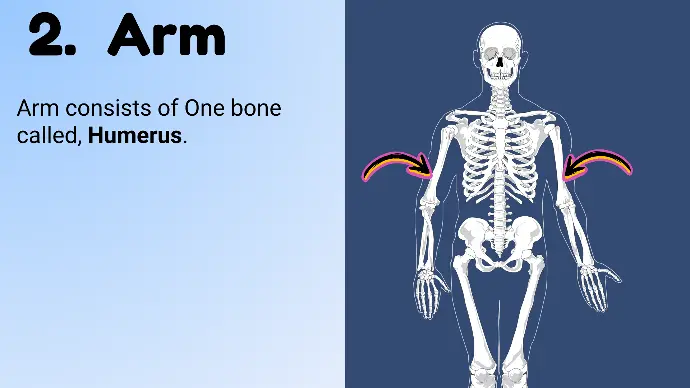
Humerus bone of Arm:
The long bone of the upper arm that runs from the shoulder to the elbow. It is the longest bone of the upper limb.
- Structure: Consists of the head, neck, greater and lesser tubercles, shaft, and distal condyles (capitulum and trochlea).
- Function: Articulates with the scapula at the shoulder and with the radius and ulna at the elbow.
3. Forearm
The forearm consists of Two bones:
a) Radius
b) Ulna
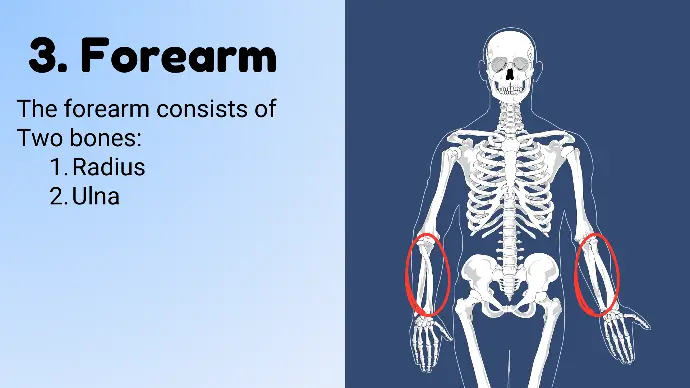
a) Radius bone of Forearm:

The lateral bone of the forearm, running parallel to the ulna.
- Structure: Consists of the head, neck, radial tuberosity, shaft, and styloid process.
- Function: Articulates with the humerus (with capitulum of humerus), at the elbow and with the carpal bones at the wrist, playing a key role in forearm rotation.
b) Ulna bone of Forearm:
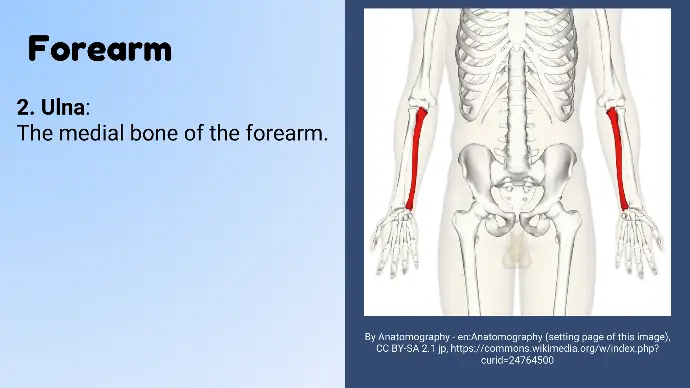
The medial bone of the forearm.
- Structure: Includes the olecranon, coronoid process, shaft, and styloid process.
- Function: Forms the elbow joint with the humerus and provides stability to the forearm.
4. Bones of Hand
It consists of 3 Categories of Bones.
a) Carpal Bones
b) Metacarpal Bones
c) Phalanges
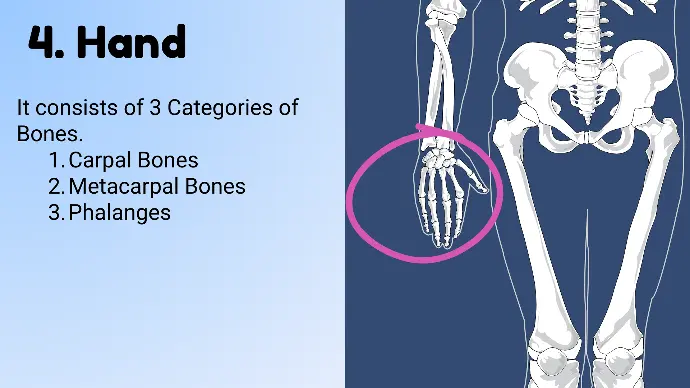
a) Carpal bones of Hand
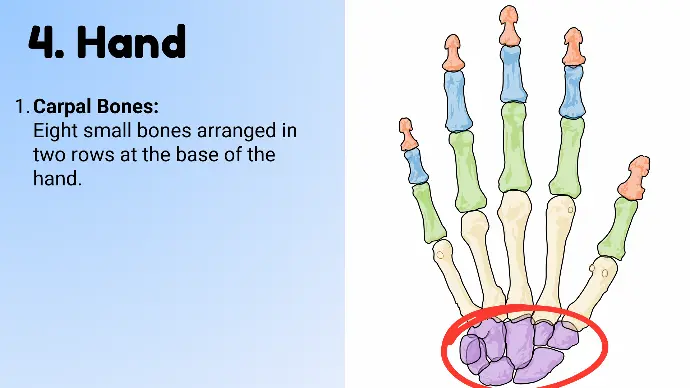
Eight small bones arranged in two rows at the base of the hand.
- Proximal Row: Scaphoid, lunate, triquetrum, pisiform.
- Distal Row: Trapezium, trapezoid, capitate, hamate.
Function: Provide flexibility and a range of motion at the wrist.
b) Metacarpal bones of Hand
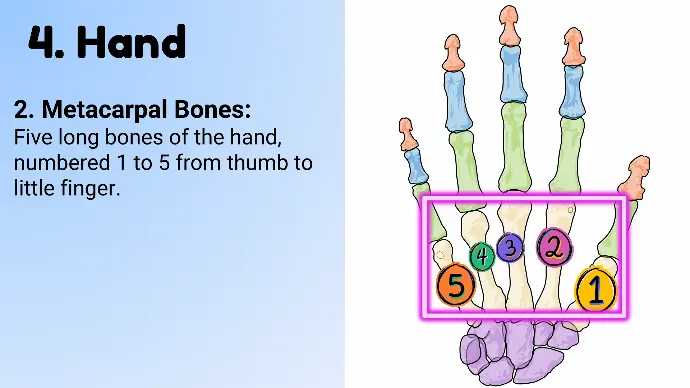
Five long bones of the hand, numbered 1 to 5 from thumb to little finger.
- Structure: Consists of the base, shaft, and head.
- Function: Form the framework of the palm and provide attachment for muscles and ligaments.
c) Phalanges bones of Hand
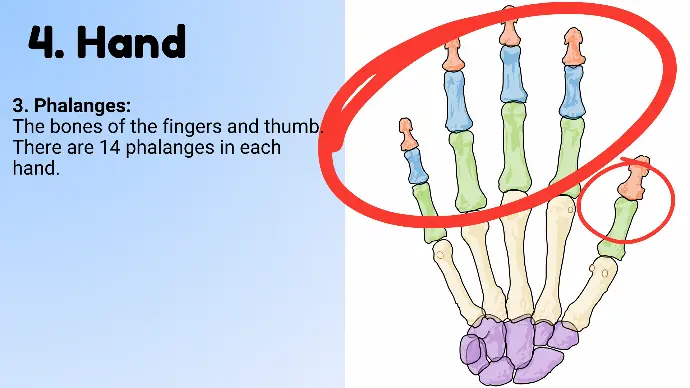
The bones of the fingers and thumb.
There are 14 phalanges in each hand.
Distribution: Each finger has three phalanges (proximal, middle, and distal), while the thumb has two (proximal and distal).
Structure: Each phalanx has a base, a shaft and a head.
Function: Enable fine motor skills and dexterity.